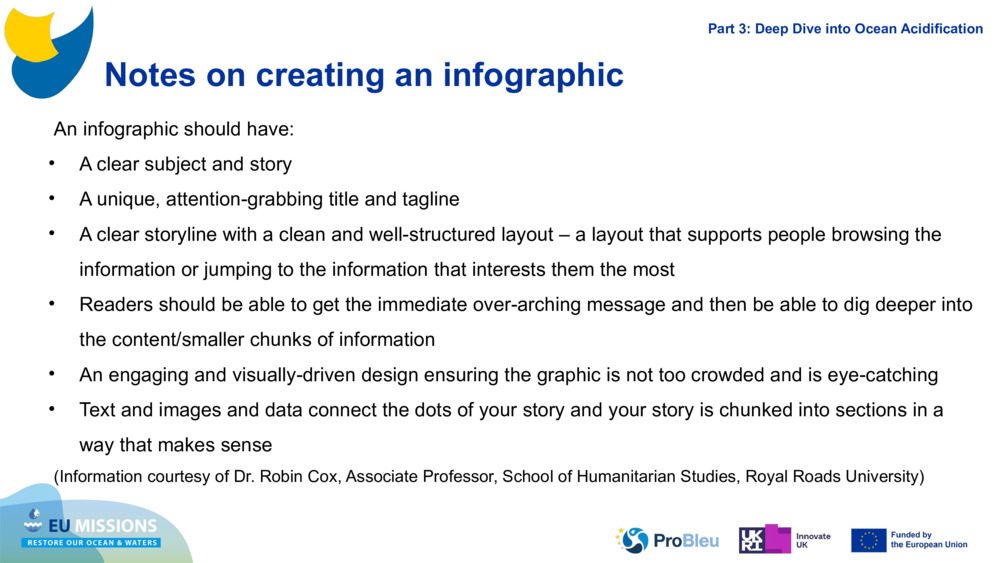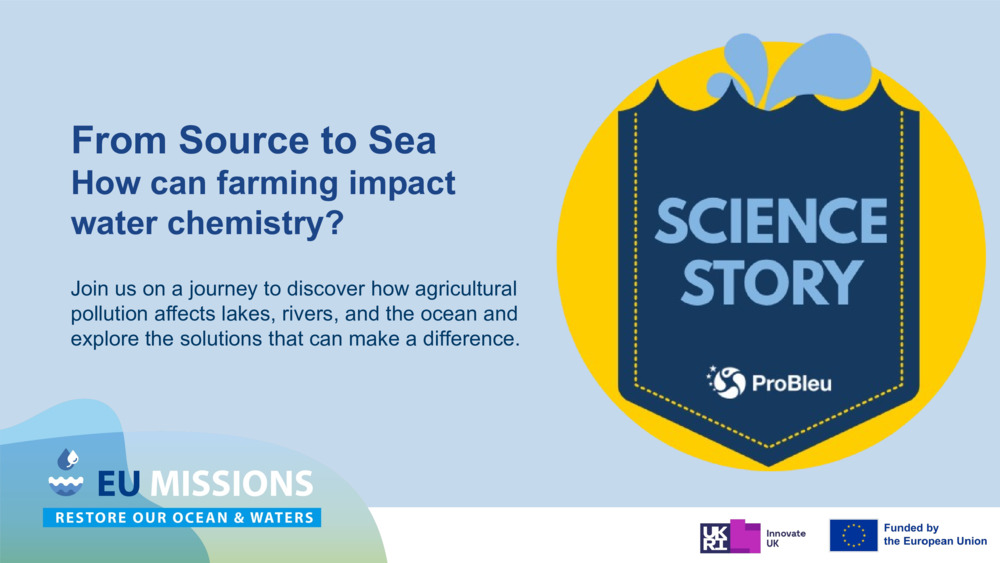Notes on creating an infographic
Notes on creating an infographic
Notes on creating an infographic An infographic should have: A clear subject and story A unique, attention-grabbing title and tagline A clear storyline with a clean and well-structured layout – a layout that supports people browsing the information or jumping to the information that interests them the most Readers should be able to get the immediate over-arching message and then be able to dig deeper into the content/smaller chunks of information An engaging and visually-driven design ensuring the graphic is not too crowded and is eye-catching Text and images and data connect the dots of your story and your story is chunked into sections in a way that makes sense (Information courtesy of Dr. Robin Cox, Associate Professor, School of Humanitarian Studies, Royal Roads University) Part 3: Deep Dive into Ocean Acidification

Originalus skaidrių rinkinys: Water Chemistry with Plymouth Marine Laboratory
Temos: Tvarūs ištekliai. Deguonies deoksigenacija. Vandenynas. Gėlo vandens. Vandenyno chemija. Tarša maistinėmis medžiagomis.
Tinkamas amžius: 12. 13. 14. 15. 16. 17. 18.
Raktažodžiai: Anglies dioksidas. Anglis. Biologija. Chemija. Cheminės reakcijos. Eutrofikacija. Hipoksija. Maistinių medžiagų. Molekulių. Ph. Rodikliai. Rūgštingumas. Šarmingumas. Ūkininkavimo. Vandenynų rūgštėjimas.
Įkėlė: pml-admin
Grupių, naudojančių šį turinį, skaičius: 1
Licensed under CC BY 4.0
Šis turinys buvo naudojamas šiuose išteklių paketuose:
Vandens chemija su Plimuto jūrų laboratorija
Mokymas apie vandens chemiją yra svarbus, nes jis sujungia pagrindines...
Peržiūrėkite mokslo istoriją